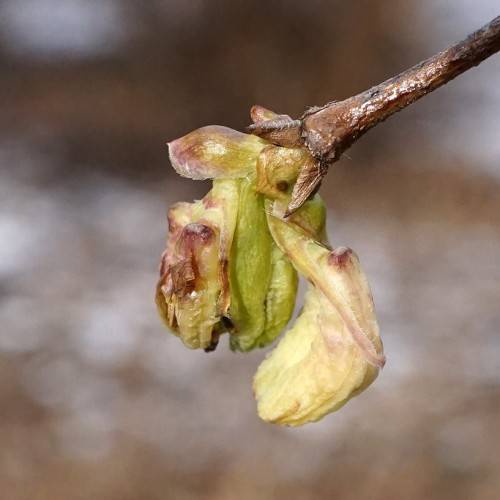
Standish's honeysuckle
Lonicera standishii
Cycle:
Perennial
Watering:
Average
Hardiness Zone:
5 - 8
Flowers:
Flowers
Sun:
Full sun,part shade
Fruits:
Fruits Ready In
Edible:
Yes
Leaf:
Yes
Growth Rate:
Low
Maintenance:
Moderate
Drought Tolerant:
Yes
Invasive:
Yes
Care Level:
Medium
watering
Standish's honeysuckle needs to be watered moderately, approximately every 1-2 weeks, depending on the weather outside. It thrives in moist, well-draining soil and appreciates a thorough watering once the soil is dry, to a depth of a few inches. However, it can be more or less sensitive to water depending on the region it is growing in and the age of the plant. During hot, dry weather, watering should be increased, while during cooler and wetter weather, watering can be curtailed. It's best to check the soil periodically to determine when and how much to water.
sunlight
Standish's honeysuckle (Lonicera standishii) requires at least 6 hours of direct sunlight per day. Ideal conditions would be 8 to 12 hours of direct sunlight throughout the day. During summer months when the days are longest, it is important to provide the plant with a break from the sunlight by partially shading it or especially in the hottest climates of the day. In areas that experience a significant winter season, it is beneficial for Standish’s honeysuckle to receive as much sunlight as possible, especially when it is warm and sunny outside. In areas with milder winters, it is important to protect Standish’s honeysuckle from harmful cold temperatures, frost, and snow that can damage the foliage and flower buds.
pruning
Standish's honeysuckle (Lonicera standishii) should be pruned in late winter or early spring, before new growth emerges. Pruning after new growth has begun may result in reduced flowering and possible damage to the existing branches. Start by removing any dead, damaged, or diseased stems and branches. Cut back any overgrown branches to their point of origin. Once the desired shape has been achieved, selectively prune growing tips to reduce length and encourage branching. Be careful not to over-prune, as this could reduce the overall health of the plant. Finally, for a final touch, lightly thin out the center of the plant to provide better air circulation and light distribution. This helps discourage disease development and promotes even growth. A thorough pruning session on this species every 2-3 years can help maintain a healthy and attractive shape.
